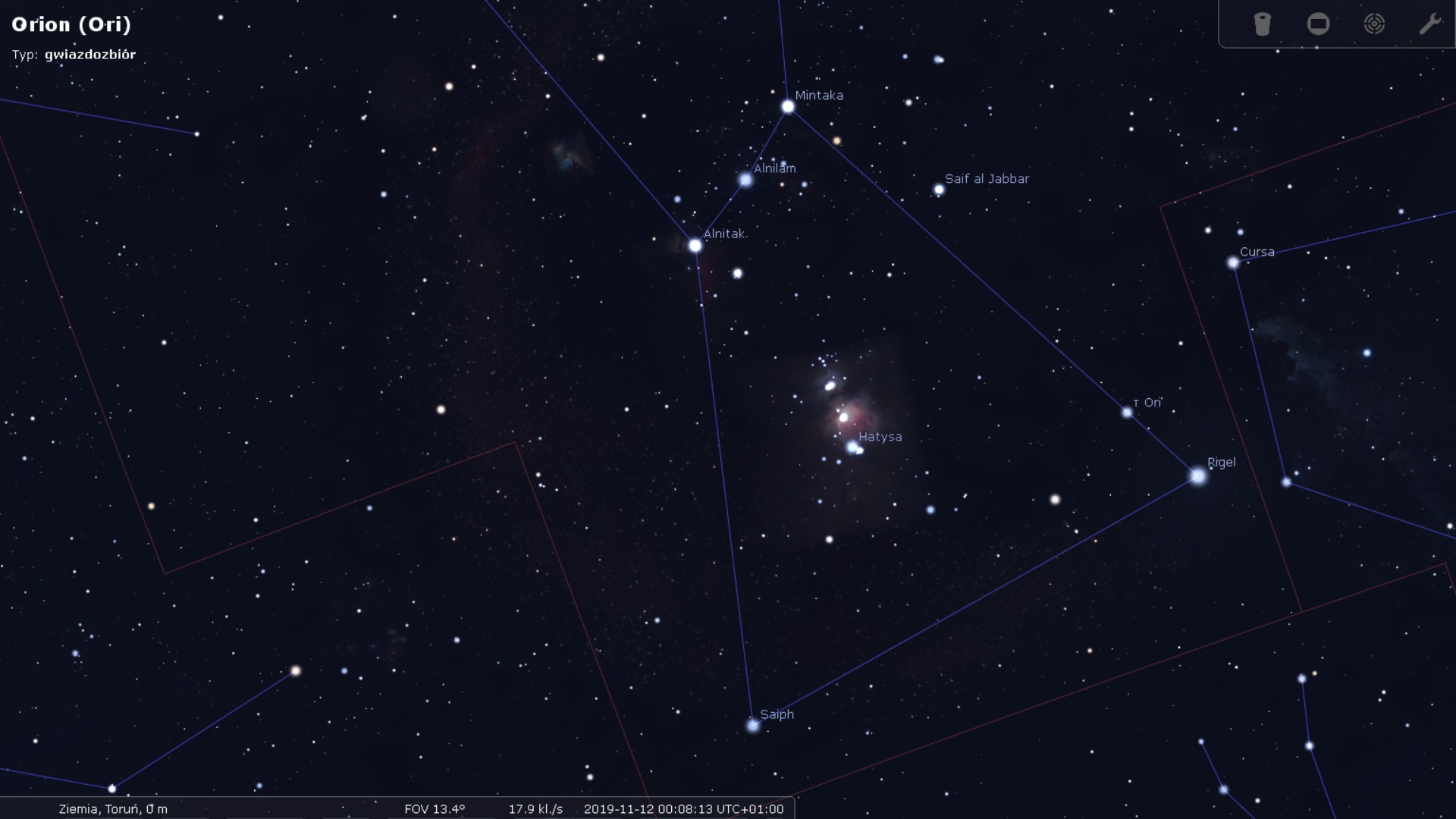

Screenshot of the paths of planets in Munich, above the European Southern Observatory headquarters. You can browse available ones in Configuration –> Tools more star catalog information is here. The standard program covers 600,000 stars, which is good for most casual users, but advanced users will probably want to look for a larger catalog. Like M31, M33's population of well-measured variable stars have helped make this nearby spiral a cosmic yardstick for establishing the distance scale of the Universe.While this is difficult for beginners to believe, there are so many stars visible (especially in telescopes) that not all catalogs cover the breadth of viewable objects. In fact, the cavernous NGC 604 is the brightest star forming region, seen here at about the 1 o'clock position from the galaxy center.

As for the view from planet Earth, this sharp composite image, a 25 panel mosaic, nicely shows off M33's blue star clusters and pinkish star forming regions that trace the galaxy's loosely wound spiral arms. About 3 million light-years from the Milky Way, M33 is itself thought to be a satellite of the Andromeda Galaxy and astronomers in these two galaxies would likely have spectacular views of each other's grand spiral star systems. M33 is over 50,000 light-years in diameter, third largest in the Local Group of galaxies after the Andromeda Galaxy (M31), and our own Milky Way. Its popular names include the Pinwheel Galaxy or just the Triangulum Galaxy. The small, northern constellation Triangulum harbors this magnificent face-on spiral galaxy, M33. Image data: Subaru Telescope, Robert Gendler, Brigham Young University Obs., Johannes Schedler Image Credit & Copyright: Robert Gendler, Subaru Telescope ( NAOJ) Image Analysis with Solar System Objects.Image Analysis II - Animation and Stacking.Image Analysis I - Image Processing and the Ring Nebula.Exploring the Sky II - Star Charts and Stellarium.Hertzsprung-Russell Diagram and Star Clusters.ASTR:1771 - Intro Astronomy I: Basic Astrophysics.ASTR:1080 - Exploration of the Solar System.ASTR:1070 - Stars, Galaxies, and the Universe.


 0 kommentar(er)
0 kommentar(er)
